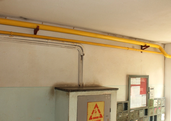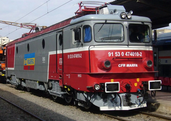Our present, but also our future, depend on the efficient functioning of capital markets, because economies with solid capital markets grow faster and cope with economic shocks much better, declared on Wednesday the First Deputy Governor of the National Bank of Romania, Leonardo Badea.
"Not only the present, but also our future depends on the efficient functioning of capital markets. Economies with solid capital markets grow faster, innovate more and cope with economic shocks much better than those that overwhelmingly depend on a single type of financing. The paradox we face is, therefore, all the more surprising. The European Union integrates one of the largest economies in the world, world-class companies and a skilled workforce, and yet, European capital markets are still fragmented, with partially untapped potential compared to the example of the American market," said Badea at the event "30 years of the Stock Exchange - past, present and future of the capital market", organized by the Bucharest Stock Exchange.
According to him, in Europe, only 20% of corporate financing comes from capital markets and 80% from the banking market. In the United States, the ratio is reversed - approximately 80% of corporate financing comes from capital markets and only 20% from bank loans.
The BNR official stressed that it has been 10 years since the Capital Markets Union was officially launched, but progress has been extremely slow, with 27 different regulatory regimes, varying insolvency laws, fragmented clearing and settlement systems, and cultural differences in investor preferences.
Leonardo Badea also pointed out that the experience of emerging markets in the region highlights the growth potential, and the Bucharest Stock Exchange demonstrates that evolution is possible, in the context in which market capitalization has doubled in the last five years, reaching almost 57 billion euros in 2025, and the number of retail investors has increased by 348%, exceeding 274,000 investors.
"This important pace of development was supported by new listings of private companies, by the introduction to trading of shares of companies in which the state is a shareholder, as well as by the issuance of government bonds. The BET-Total-Return index recorded a performance of plus 230% in the last five years, ranking second in the region and significantly outperforming global emerging markets. The figures confirm that consistent institutional reforms coupled with strategic commitment can determine performances comparable to those of mature markets in Eastern European markets," explained Badea.
At the same time, he added, the reclassification of the Bucharest Stock Exchange to the status of "secondary emerging market", following the upgrade granted by FTSE Russell in 2020, strengthened the confidence of foreign investors, increased liquidity and improved the visibility of Romanian companies internationally.
"Observing the evolution of companies listed on the BVB, it must be emphasized that, in economic terms, the share of listed non-financial companies is still low. In 2024, they generated only 4.5% of the gross value added of the non-financial sector, employed 1.3% of employees and held 6.6% of assets. However, these proportions clearly indicate that there is a very large space for expanding the issuer base," the First Deputy Governor emphasized.
According to him, a high degree of concentration is also noted in terms of turnover. Companies in the extractive industry sector have the largest share in the turnover of listed companies (40%), although they are three in number. The sector with the most companies is the manufacturing industry (34 companies), which accumulates 27% of the turnover. The 4 companies in the utilities sector have 23% of the turnover of listed companies, the third highest share. However, no company in the agricultural sector is listed on the main market at the moment.
"It is worth emphasizing that, from certain perspectives, listed companies have a superior economic and financial performance to that of all non-financial companies. The return on assets (ROA) was 9.8% in 2024, 1.2 percentage points above the sector average, and the financial health of listed companies is much better than that of the entire sector of non-financial companies in Romania. These companies record more favorable levels, both of the degree of indebtedness and of the general liquidity and the term of recovery of receivables. In particular, the low degree of indebtedness (38% vs. 163% at the aggregate level) indicates a considerable space for these companies to attract additional financing to carry out their activity in the future," stated Leonardo Badea.
At the same time, he added, companies listed on the BVB have more robust financing structure characteristics compared to the rest of the economy. They rely significantly on equity (65%, compared to 36% for the entire economy), and trade debts represent the second source of financing. The bank lending portfolio granted to listed companies amounted to 9.4 billion RON in September 2025 and was of higher quality compared to that of the entire segment of non-financial companies.
"Although at the aggregate level the NPL rate, i.e. of non-performing loans, in Romania is 2.82%, in the case of listed non-financial companies it was only 0.15% in September 2025," the BNR official pointed out.
On the other hand, given the concern regarding the structural causes that determine the high current account deficit, Badea mentioned that, from the perspective of foreign trade activity, at the end of 2024, companies listed on the BVB have a relatively small importance in total imports and exports, of 6.2 billion euros and 4 billion euros, respectively (the equivalent of 5.6% and, respectively, 5.2% of the total economy).
"Taken as a whole, these data do not only indicate the current position, but also highlight the magnitude of the development potential. Therefore, I look with confidence to the opportunities that lie ahead. And not only in the case of our country, but of the entire region. Advanced digital infrastructure facilitates the rapid transition to modern market systems. Increasing incomes generate significant reserves of investable capital. EU membership provides a solid regulatory framework and access to financial resources. The OECD accession process determines the increase in market transparency and the implementation of an articulated strategy for capital market development; emerging innovation centers in Bucharest, Prague, Tallinn or Warsaw cultivate and will cultivate this appetite of enterprises to use capital market instruments for financing. The path forward for Eastern Europe consists of both regional development and integration with larger European markets. "large", the NBR representative also said.
He expressed his belief that the Romanian capital market will follow this path and, after 30 years of operation of the BVB, we are not only faced with an analysis of what happened, but also with a challenge on the evolution of what needs to happen.
































Comentează